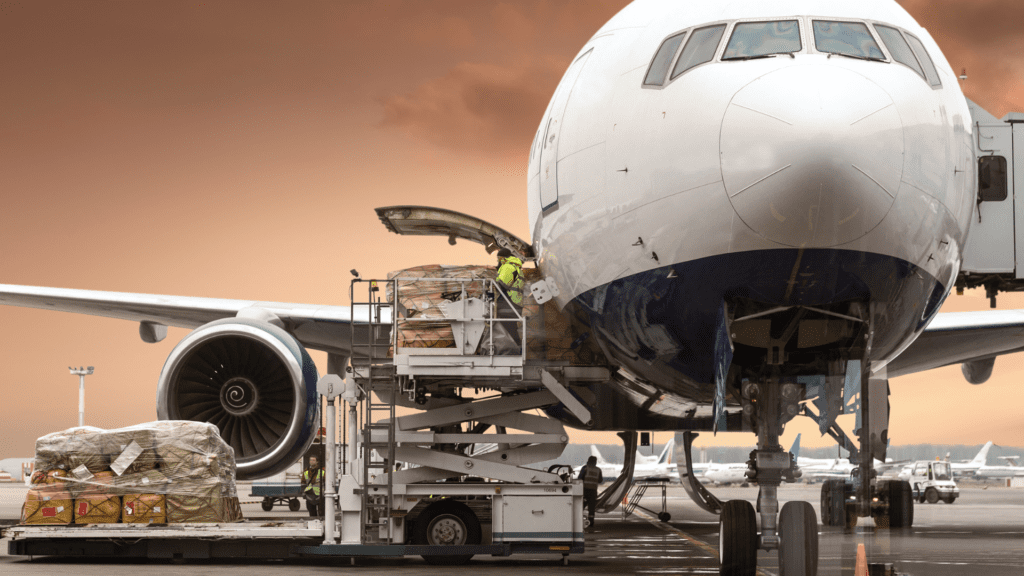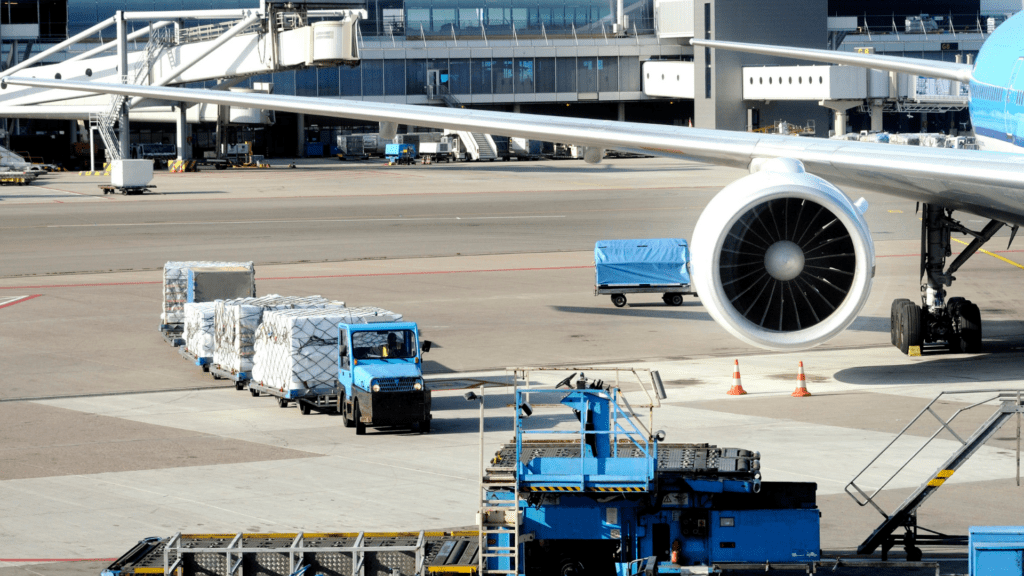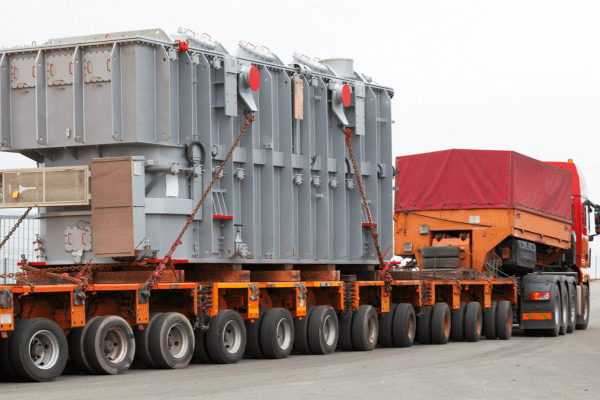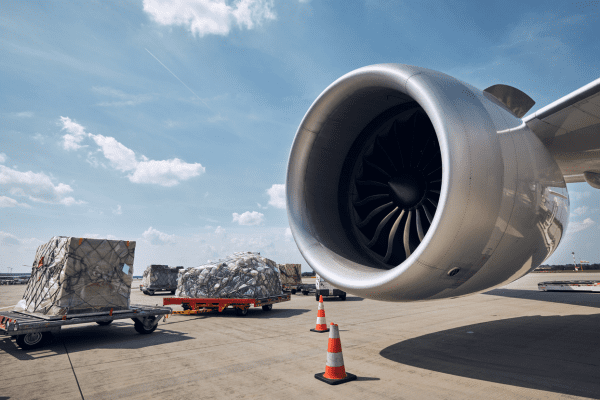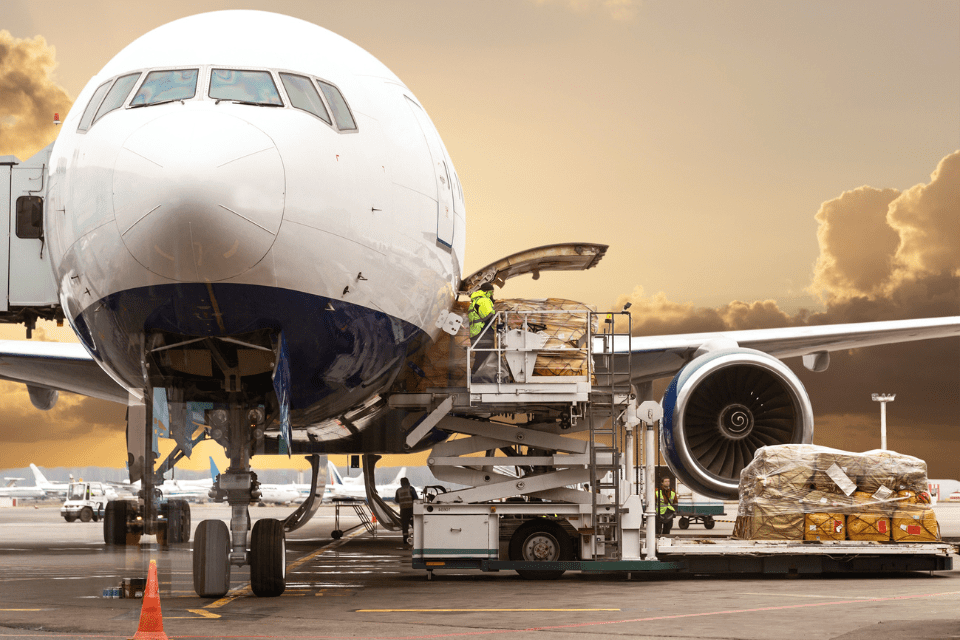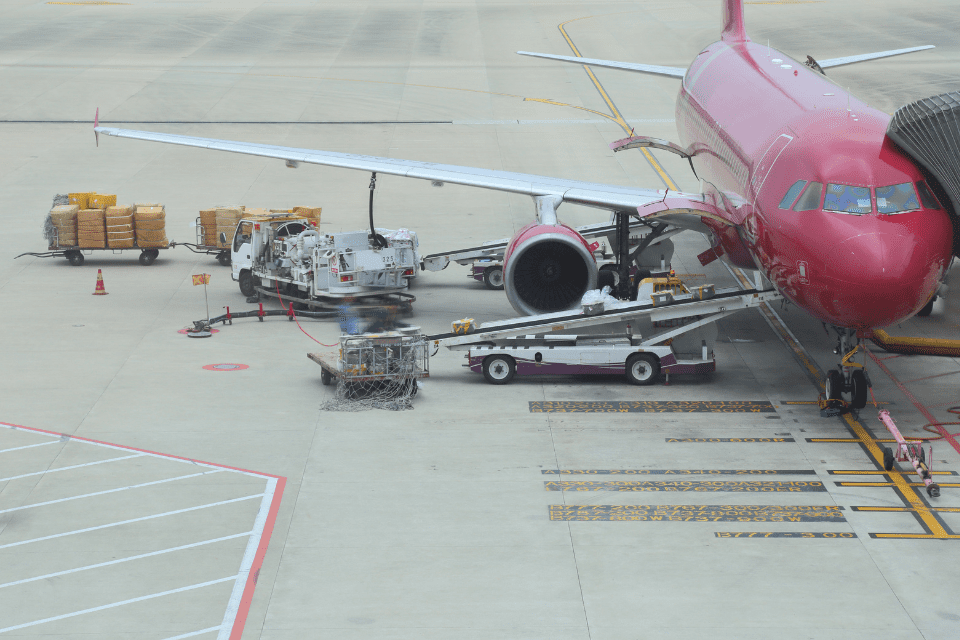Transporting oversized cargo can be a real challenge, but air freight offers some unique benefits that make it a go-to option for heavy equipment. Whether it’s for mining, construction, or defence, getting large items from point A to point B quickly and safely is essential. In this article, we’ll explore the ins and outs of oversized cargo air freight and why it might just be the best choice for your heavy equipment needs.
Key Takeaways
- Air freight is the fastest way to move oversized cargo, getting your equipment where it needs to be without delays.
- The risk of damage is lower with air freight, thanks to better handling and transport conditions.
- Air freight provides access to global markets, making it easier to reach remote locations.
- Specialised equipment and handling techniques are crucial for transporting oversized cargo safely.
- Understanding the regulatory landscape is key to ensuring compliance when shipping oversized items.
Understanding Oversized Cargo Air Freight
Definition of Oversized Cargo
So, what exactly is oversized cargo? It’s not just about weight, though that’s definitely a factor. We’re talking about cargo that exceeds the standard dimensions or weight limits for regular shipping containers or aircraft holds. This often requires specialised handling and aircraft. Think of it as anything that won’t fit neatly into a standard box or on a regular pallet. This could include large machinery, aircraft parts, or even pre-fabricated building sections. The specific dimensions that qualify as ‘oversized’ can vary depending on the airline and the aircraft being used, so it’s always best to check the requirements upfront. When you’re dealing with oversized freight transport, you’re not just shipping; you’re orchestrating a complex logistical operation.
Common Types of Oversized Cargo
Oversized cargo comes in all shapes and sizes, literally! Here are a few common examples:
- Construction Equipment: Bulldozers, excavators, and other heavy machinery.
- Mining Equipment: Large drills, conveyor belts, and processing components.
- Aerospace Components: Aircraft wings, engines, and fuselage sections.
- Energy Sector Equipment: Wind turbine blades, generators, and transformers.
- Manufacturing Components: Large industrial presses, moulds, and specialised tools.
These items often require disassembly for transport and reassembly at the destination. The sheer size and weight of these items present unique challenges, demanding careful planning and specialised equipment. It’s not your average parcel delivery, that’s for sure. You need to consider the benefits of air freight over sea freight for oversized loads to make the right choice.
Key Industries Utilising Air Freight
Several industries rely heavily on oversized cargo air freight to keep their operations running smoothly. Here are a few key players:
- Mining: When a critical piece of equipment breaks down at a remote mine site, air freight is often the fastest way to get a replacement part in place, minimising downtime.
- Construction: For time-sensitive projects or projects in remote locations, air freight can be used to transport large construction components, speeding up the building process.
- Aerospace: The aerospace industry relies on air freight to move aircraft parts quickly, whether it’s for routine maintenance or emergency repairs.
- Energy: The energy sector uses air freight to transport large and heavy equipment to power plants and renewable energy projects around the world.
- Defence: The defence industry often requires rapid deployment of equipment and supplies, making air freight a vital tool for international air cargo solutions.
Air freight isn’t always the cheapest option, but when speed and reliability are paramount, it’s often the best choice. Consider the cost of downtime or project delays when evaluating your shipping options. Sometimes, paying a bit more upfront for air freight can save you a lot of money in the long run.
Ultimately, understanding the nuances of oversized cargo air freight is about recognising the value it brings to industries that demand speed, reliability, and global reach. It’s a complex field, but with the right planning and the right partners, it can be a game-changer for your business. Don’t hesitate to explore air freight services for large cargo to see how they can benefit your specific needs.
Benefits of Air Freight for Heavy Equipment
Air freight offers some pretty compelling advantages when you’re dealing with heavy equipment transportation. It’s not always the cheapest option, but when time is of the essence or the cargo is particularly sensitive, it can be a game-changer. Let’s look at some of the key benefits.
Speed and Efficiency
The most obvious advantage of air freight is speed. When you need to get heavy equipment shipping across the country, or even across the globe, air freight is significantly faster than sea or land transport. This can be crucial for time-sensitive projects, like getting a vital piece of machinery to a construction site to avoid costly delays. Think about it: days instead of weeks. That’s a big deal.
Reduced Risk of Damage
Air freight generally involves less handling than other modes of transport. This means there’s a lower risk of damage to your valuable equipment. Plus, air cargo is typically subject to stricter security measures, further reducing the risk of loss or theft. When you’re dealing with expensive and delicate machinery, that peace of mind is worth a lot.
Global Reach and Accessibility
Air freight opens up a world of possibilities when it comes to transporting large machinery by air. Even if your destination is remote or difficult to access by sea or land, air freight can often provide a solution. Airports are located all over the world, making it easier to get your equipment where it needs to be, regardless of geographical challenges. This is especially important for industries like mining and construction, where projects often take place in far-flung locations. If you’re wondering how to coordinate air transport for heavy construction equipment to a remote mine site, air freight is your answer.
Air freight isn’t just about speed; it’s about reliability and access. It’s about getting your equipment where it needs to be, when it needs to be there, in the condition you expect it to be in. For many businesses, that’s an investment that pays for itself.
Challenges in Transporting Oversized Cargo
While air freight offers significant advantages for heavy equipment transport, it’s not without its hurdles. Understanding these challenges is key to successful project cargo solutions.
Logistical Complexities
Moving oversized cargo by air involves a lot more than just loading it onto a plane. It’s a complex dance of coordination, planning, and problem-solving. You’ve got to think about:
- Route planning: Finding the right airports and flight paths that can handle the size and weight of your cargo.
- Ground transportation: Getting the equipment to and from the airport can require specialised vehicles and permits.
- Customs clearance: Navigating customs regulations in different countries can be a real headache.
It’s like putting together a giant jigsaw puzzle where all the pieces are heavy and awkward. One wrong move, and the whole thing can fall apart. That’s why it’s important to work with experienced professionals who know how to handle these complexities.
Special Handling Requirements
Oversized cargo often needs special treatment to ensure it arrives safely and undamaged. This can include:
- Custom crating: Building crates that are strong enough to protect the equipment during transit.
- Temperature control: Some equipment may be sensitive to temperature changes and require climate-controlled transport.
- Shock absorption: Using special padding and restraints to minimise the impact of bumps and vibrations.
The weight and dimensions of the cargo can also pose challenges for loading and unloading. You need specialised equipment and trained personnel to handle these tasks safely.
Regulatory Compliance
Challenges in shipping large machinery internationally are often tied to regulatory compliance. Air freight is heavily regulated, and oversized cargo is no exception. You need to comply with a range of regulations related to:
- Aircraft safety: Ensuring that the cargo is properly secured and doesn’t pose a risk to the aircraft.
- Environmental protection: Complying with regulations related to emissions and noise pollution.
- Customs and trade: Adhering to import and export regulations in different countries.
Failing to comply with these regulations can result in delays, fines, or even the seizure of your cargo. It’s important to work with a freight forwarder who is familiar with the relevant regulations and can help you navigate the compliance process.
Cost Considerations for Air Freight
Let’s be real, when you’re dealing with oversized cargo, cost is always a major factor. It’s not just about the initial price tag; it’s about understanding the whole picture and whether the benefits outweigh the expenses. So, how do you make sense of the cost considerations for air freighting oversized cargo? Let’s break it down.
Comparing Air Freight to Sea Freight
Okay, so you’ve got a massive piece of mining equipment that needs to get from Perth to a remote site in the Pilbara. Sea freight is almost always cheaper upfront, right? Usually, yes. But consider the bigger picture. How long will it take by sea? Weeks? Months? What are the storage costs at the port? What about potential delays? Air freight, while pricier initially, can drastically cut down on transit time, reducing those associated costs. Plus, less time in transit often means less risk of damage or theft. It’s a trade-off, and you need to weigh the pros and cons carefully.
Cost-Benefit Analysis
Doing a proper cost-benefit analysis is vital. Don’t just look at the freight charges. Factor in:
- Time Savings: How much is it worth to get your equipment operational faster?
- Reduced Downtime: If this is a replacement part, what’s the cost of your operations being down?
- Inventory Costs: Do you need to hold large inventories if shipping is slow?
- Risk Mitigation: What’s the cost of potential damage or loss at sea?
A thorough cost-benefit analysis will give you a much clearer picture of the true cost of each shipping option. It’s about more than just the freight bill; it’s about the overall impact on your bottom line.
Factors Influencing Pricing
Several things affect the price of air freight logistics. Understanding these can help you manage costs:
- Weight and Dimensions: This is the big one. The heavier and larger your cargo, the more it will cost.
- Destination: Remote or difficult-to-reach locations will generally be more expensive.
- Urgency: If you need it there ASAP, expect to pay a premium.
- Fuel Costs: Fluctuations in fuel prices can significantly impact air freight rates.
- Special Handling: If your cargo requires special handling (e.g., temperature control, hazardous materials), that will add to the cost.
- Airline and Route: Different airlines have different pricing structures, and some routes are more competitive than others.
| Factor | Impact on Price |
| Weight/Dimensions | Higher |
| Remote Destination | Higher |
| Urgency | Higher |
| Fuel Costs | Variable |
Special Handling and Equipment for Air Freight
Air freighting oversized cargo isn’t just about getting it on a plane; it’s about getting it there safely and efficiently. This often requires specialised handling and equipment. Ever wondered how they load a massive piece of machinery onto an aircraft? It’s not as simple as a forklift and a prayer!
Palletisation Techniques
Palletisation is a key part of preparing oversized cargo for air transport. It’s not just about slapping something on a pallet; it’s about creating a stable, secure base that can withstand the rigours of flight. We need to consider the dimensions and weight distribution to ensure it fits within the aircraft’s cargo hold and doesn’t shift during transit. Think of it like building a really strong, custom-fit Lego structure for your cargo.
- Custom Pallets: Often, standard pallets won’t cut it. Custom-built pallets are designed to fit the exact dimensions and weight requirements of the cargo.
- Reinforcement: Heavy-duty strapping, bracing, and wrapping are used to secure the cargo to the pallet.
- Weight Distribution: Ensuring even weight distribution is critical for safety and stability during flight. Uneven weight can cause handling problems and even damage to the aircraft. It’s important to consider air freight solutions for this.
Loading and Unloading Machinery
Getting oversized cargo on and off the plane requires some serious muscle – and some seriously specialised machinery. Forget your standard forklift; we’re talking heavy-duty cranes, specialised loaders, and sometimes even custom-built ramps. The choice of machinery depends on the size, weight, and shape of the cargo, as well as the capabilities of the airport.
- Cranes: Used for lifting extremely heavy or awkwardly shaped items.
- Aircraft Loaders: These are designed to lift and move cargo directly into the aircraft’s cargo hold.
- Rollers and Conveyors: These systems help to move cargo smoothly and efficiently within the cargo hold.
The key to successful loading and unloading is careful planning and coordination. Every step needs to be mapped out in advance to minimise the risk of damage and ensure the process is as efficient as possible.
Weight Distribution and Balance
Weight distribution is absolutely critical for safe air transport. An aircraft’s balance is carefully calculated, and any shift in weight can affect its stability. When loading oversized cargo, it’s essential to distribute the weight evenly throughout the cargo hold to maintain the aircraft’s centre of gravity. This often involves using load-spreading equipment and carefully positioning the cargo within the aircraft. It’s a bit like a giant, high-stakes game of Tetris, where one wrong move could have serious consequences. Careful planning is essential.
Here’s a simplified example of how weight distribution might be planned:
| Section | Weight (kg) | Percentage of Total Weight | Location in Aircraft |
| Front | 2,500 | 25% | Cargo Hold A |
| Middle | 5,000 | 50% | Cargo Hold B |
| Rear | 2,500 | 25% | Cargo Hold C |
Regulatory Framework for Air Freight
Navigating the world of air freight involves more than just getting your heavy equipment on a plane. There’s a whole heap of regulations you need to be across, both here in Australia and internationally. Understanding these rules is essential for smooth, compliant, and safe transport.
Permits and Documentation
Before your oversized cargo even gets near an airport, you’ll need to sort out the paperwork. This isn’t just a formality; it’s about ensuring everyone knows what’s being shipped, where it’s going, and that it meets all safety standards. What kind of documentation are we talking about? Well, think about things like:
- Air Waybills: These are like the bill of lading for air freight, detailing the shipment’s contents, origin, and destination.
- Commercial Invoices: These are needed for customs clearance and show the value of the goods.
- Packing Lists: A detailed list of what’s in each package, which is super helpful for customs and handling.
- Certificates of Origin: These confirm where the goods were made, which can affect import duties.
- Dangerous Goods Declarations: If your heavy equipment involves any hazardous materials (even small amounts of fuel), you’ll need to declare them properly.
Getting the right permits can be a bit of a maze, especially for oversized cargo. You might need special permits from aviation authorities, local councils, or even government departments, depending on the size and nature of your equipment. It’s always best to start this process early to avoid delays. If you need help with customs regulations for air freight, there are experts who can guide you.
Safety Checks and Standards
Safety is paramount in air freight, and there are strict checks and standards in place to minimise risks. These aren’t just guidelines; they’re legally binding requirements that everyone involved in the process needs to follow. Some key areas include:
- Aircraft Maintenance: Airlines have to maintain their aircraft to very high standards, with regular inspections and repairs.
- Cargo Securing: Making sure cargo is properly secured inside the aircraft is critical to prevent it from shifting during flight. This often involves specialised palletisation techniques and strapping.
- Weight and Balance: Aircraft need to be loaded in a way that maintains their balance. Overweight or unbalanced cargo can be extremely dangerous.
- Security Screening: All cargo goes through security screening to detect any potential threats.
- Staff Training: Everyone handling air freight needs to be properly trained in safety procedures and regulations.
International Regulations
When you’re shipping heavy equipment internationally, you’re not just dealing with Australian rules; you’re also subject to the regulations of other countries and international bodies. This can add another layer of complexity to the process. Some key international regulations include:
- ICAO (International Civil Aviation Organisation): ICAO sets standards and recommended practises for aviation safety, security, and environmental protection.
- IATA (International Air Transport Association): IATA represents airlines and develops standards for various aspects of air transport, including cargo handling and dangerous goods regulations.
- Customs Regulations: Each country has its own customs regulations for importing goods, including tariffs, taxes, and documentation requirements.
- Trade Agreements: Trade agreements between countries can affect the tariffs and regulations that apply to your shipment.
It’s important to stay up-to-date with the latest international regulations, as they can change frequently. Working with an experienced freight forwarder can help you navigate these complexities and ensure your shipment complies with all applicable rules.
Keeping up with all these regulations can feel like a full-time job, but it’s a critical part of transporting oversized cargo by air. By understanding the rules and working with experienced professionals, you can ensure your heavy equipment gets where it needs to go safely and efficiently. Ignoring these regulations can lead to costly delays, fines, or even legal action.
Case Studies: Successful Air Freight Operations
Mining Equipment Transport
Air freight plays a vital role in the mining industry, especially when time is of the essence. Consider a case study of successful heavy equipment air shipments involving a remote mine site in Western Australia. A critical piece of machinery broke down, threatening to halt operations and cost the company millions in lost revenue. Standard sea freight would have taken weeks, but air freight offered a solution. The mining company chartered a large cargo plane to transport the replacement part directly to a nearby airstrip.
The speed of air freight minimised downtime, allowing the mine to resume operations within days. This highlights the significant cost savings that can be achieved by using air freight in time-critical situations.
Defence Logistics
Defence logistics often require the rapid deployment of equipment and supplies to remote or challenging locations. Air freight is invaluable in these scenarios. For example, during a peacekeeping mission in the Pacific, defence forces needed to quickly transport specialised vehicles and communication equipment. Air freight enabled the swift delivery of these assets, ensuring the mission’s success.
Here’s why air freight was the best option:
- Speed: Critical equipment arrived within 48 hours.
- Security: Enhanced security protocols minimised the risk of damage or loss.
- Accessibility: Remote airstrips were accessible, bypassing congested ports.
Construction Machinery Delivery
Construction projects frequently face tight deadlines and require specialised equipment. Air freight can be a game-changer when dealing with oversized or time-sensitive machinery. Consider a project in Sydney where a tunnel-boring machine needed a crucial component from Germany. Sea freight would have caused significant delays, potentially pushing back the project completion date. Air freight allowed the component to be delivered directly to Sydney Airport, from where it was transported to the construction site. This ensured the project remained on schedule and within budget. The future of air freight is bright, with more and more companies relying on it.
Here’s a breakdown of the cost-benefit analysis:
| Factor | Sea Freight | Air Freight |
| Transit Time | 4-6 weeks | 2-3 days |
| Potential Delay | High | Low |
| Cost | Lower | Higher |
Ultimately, the reduced downtime and adherence to the project timeline justified the higher cost of air freight.
In this section, we explore some great examples of air freight operations that have really worked well. These case studies show how effective planning and teamwork can lead to successful deliveries. If you want to learn more about how we can help with your air freight needs, visit our website today!
Final Thoughts on Air Freight for Heavy Equipment
In summary, air freight is a solid choice for moving oversized cargo like heavy equipment. It’s fast and reliable, which can save you a lot of time and hassle, especially when you’re working on tight deadlines. Sure, it might cost a bit more than sea transport, but when you factor in the reduced risk of damage and delays, it often makes sense. Just remember, it’s important to work with experienced air freight providers who know the ins and outs of handling heavy loads. They can help you navigate the regulations and ensure everything goes smoothly. So, if you’re in the mining, defence, or construction sectors, consider air freight for your next big move.
Frequently Asked Questions
What is oversized cargo?
Oversized cargo refers to items that are too large or heavy for regular shipping methods. This includes heavy machinery, large construction equipment, and other big items.
Why is air freight better for heavy equipment?
Air freight is faster and often safer for transporting heavy equipment compared to sea freight. It reduces the time goods spend in transit, which is crucial for urgent projects.
What are the challenges of transporting oversized cargo?
Transporting oversized cargo can be tricky due to logistics, special handling needs, and strict regulations that must be followed.
How does air freight pricing compare to sea freight?
Air freight is usually more expensive than sea freight. However, the speed and reliability it offers can make it worth the extra cost, especially for urgent shipments.
What special equipment is needed for air freight?
Special equipment like palletisation tools, loading machinery, and systems to ensure weight balance are necessary to safely transport oversized cargo by air.
What regulations must be followed for air freight?
Transporting oversized cargo by air requires permits, safety checks, and compliance with international regulations to ensure safe and legal shipping.





